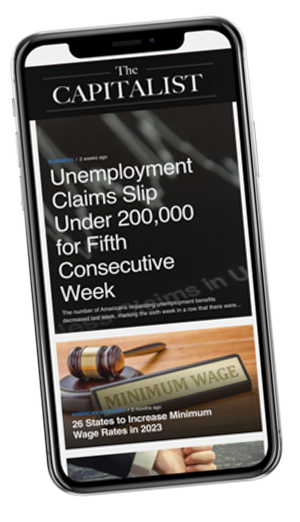News
Biden, CFPB Implement Crackdown on Excessive Bank Overdraft Fees

Source: YouTube
The Biden administration has finalized a sweeping rule to cap overdraft fees, aiming to curb excessive charges by banks and credit unions. Issued by the Consumer Financial Protection Bureau (CFPB), the rule could save consumers an estimated $5 billion annually. It allows institutions three options: charge a flat $5 fee, limit fees to their actual costs, or continue charging higher fees with full transparency and compliance with lending laws.
For years, overdraft fees have averaged $35 per transaction, disproportionately impacting low-income Americans. According to CFPB Director Rohit Chopra, these fees have functioned as “high-cost credit,” draining billions from deposit accounts and causing financial hardships. The rule seeks to address this imbalance, but its implementation is already facing legal and regulatory pushback.
Relief for Consumers: How Much Will It Help?
The new rule is a major win for consumers, especially those struggling to manage their finances. CFPB estimates suggest that households paying overdraft fees could save up to $225 annually. This relief is particularly significant for families living paycheck to paycheck, where unexpected fees often lead to cascading financial difficulties.
Consumer advocacy groups like the U.S. Public Interest Research Group (PIRG) have praised the measure, noting that it protects vulnerable customers from predatory practices. By capping fees, the rule also promotes transparency, requiring banks to disclose the terms and interest rates associated with overdraft loans.
However, critics warn that reduced fees may come at a cost. Some argue that limiting overdraft fees could lead to fewer overdraft services, pushing consumers toward riskier alternatives like payday loans. This unintended consequence raises questions about whether the rule will truly empower consumers or limit their financial options.
The Banking Industry’s Fierce Opposition
Unsurprisingly, the banking sector has voiced strong opposition to the CFPB’s new rule. Organizations like the American Bankers Association (ABA) and the Consumer Bankers Association (CBA) argue that the rule represents government overreach and could harm both banks and consumers.
Rob Nichols, CEO of the ABA, labeled the rule as a form of “price control” that undermines banks’ ability to offer overdraft services. Additionally, some banks have already innovated in this space, introducing next-day grace periods and eliminating non-sufficient funds fees. Critics say the rule penalizes these efforts, stifling competition and innovation.
On the legal front, the CBA has filed a lawsuit against the CFPB, challenging the rule’s statutory authority. Analysts expect a long regulatory battle, with banks leveraging lobbying and litigation to delay or weaken the rule’s implementation, currently set for October 2025.
Impact on Businesses: A Double-Edged Sword
For businesses, the new rule creates both opportunities and challenges. On one hand, reduced overdraft fees could improve consumer loyalty and trust, benefiting institutions that adapt early. By enhancing transparency and fairness, banks may attract customers who value ethical practices.
On the other hand, the rule threatens a significant revenue stream. Overdraft fees have historically generated billions in profits for financial institutions, particularly regional banks. Losing this income may force some banks to cut costs or introduce new charges, potentially shifting the financial burden elsewhere.
From a macroeconomic perspective, the rule could stimulate spending by reducing financial stress for consumers. By keeping more money in consumers’ pockets, the measure may indirectly support retail and service industries, contributing to overall economic growth.
Will Overdraft Fees Remain Capped Under the Trump Administration?
With President-elect Donald Trump taking office in January, the future of the rule remains uncertain. Trump’s incoming administration is likely to install a CFPB head less inclined to support Biden-era regulations. This shift could lead to revisions or even the repeal of the overdraft fee cap.
Trump has previously criticized excessive regulations, advocating for policies that prioritize business growth. Banking lobbyists are expected to leverage these views to challenge the rule further. However, GOP populism, which often aligns with consumer-friendly policies, may complicate outright opposition. The balance between consumer protection and financial industry autonomy will be a critical focus as Trump’s administration evaluates the rule.
Balancing Relief and Regulation
The CFPB’s overdraft fee rule reflects a broader effort to crack down on what the Biden administration deems “junk fees.” While it offers significant relief to consumers, the rule raises complex questions about its long-term impact on banking services and the broader economy.
As the legal battles unfold, both consumers and businesses will need to adapt to a rapidly changing financial landscape. Whether the rule survives its regulatory challenges or is scaled back under Trump’s administration, its implications will be felt for years to come.
What do you think of the CFPB’s new rule limiting bank overdraft fees? Share your thoughts with us regarding this.



